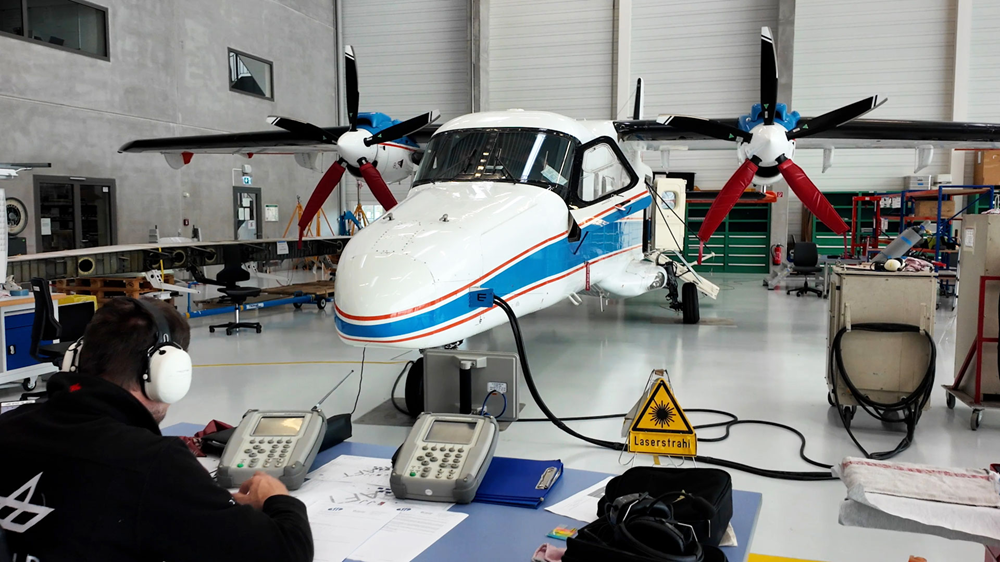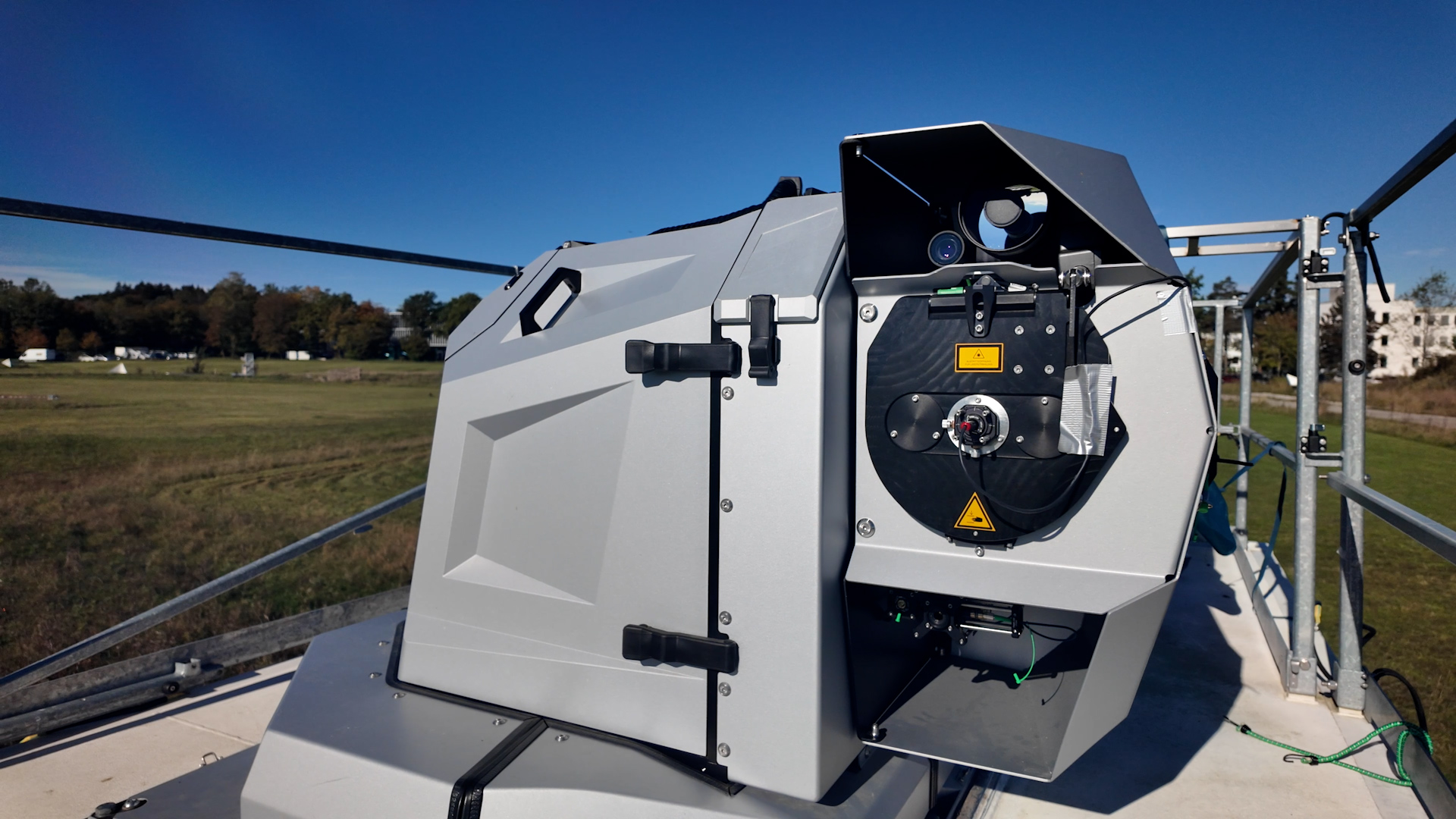QuNET project reaches another milestone with key experiment
Foundation for the future quantum network: quantum channels tested in flight
The latest key experiment of the QuNET initiative was successfully completed today with a flight experiment between Oberpfaffenhofen and Erlangen. The aircraft formed a mobile node in a quantum network and established a connection to a ground station. There, the photons were successfully received and measured. The technologies from the demonstrated key experiment are groundbreaking for future secure quantum communication.
It is not easy to send individual photons from an aircraft in a targeted manner, capture them in a ground station, and also detect them. Researchers have now succeeded in doing this: they have even measured various quantum channels between an aircraft and a ground station several times, sent photons to an ion trap, and tested technologies for quantum key distribution. The flight experiment took place as part of the QuNET initiative, which develops technologies for quantum-secure communication. Photons, or particles of light, can be used to generate quantum cryptographic keys that make future communication practically tap-proof. The technologies are also groundbreaking for a future quantum internet that connects quantum computers with each other.
Scientists from the German Aerospace Center (DLR), the Max Planck Institute for the Science of Light (MPL), Friedrich Alexander University Erlangen (FAU), as well as the Fraunhofer Institutes for Applied Optics and Precision Engineering (IOF) and Heinrich Hertz Institute (HHI) participated in the experiment. The results have now been presented to the Federal Ministry of Research, Technology, and Space (BMFTR), which funds the QuNET initiative. Quantum key distribution is particularly important for communication between governments and authorities, but also in general for protecting infrastructure and data in everyday life in the future.
"We are working on practical solutions for satellite-based quantum communication, which can be used to transmit quantum states over long distances and generate secure keys. In fiber optics, this is only possible over a few hundred kilometers. Quantum encryption via satellite, on the other hand, enables arbitrarily greater distances on Earth," says Florian Moll from the DLR Institute of Communications and Navigation, explaining the future technology. To cover long distances, satellites, aircraft, or other mobile platforms are to become part of quantum networks in the future.
The current experiment was flown using a DLR research aircraft from the Flight Experiments facility. The scientists installed an optical communication terminal in the Dornier 228. The aircraft formed a mobile node in a quantum network and established a connection to an optical receiving station on the ground. This ground station is a mobile container with an integrated receiving terminal, known as the QuBUS, provided by Fraunhofer IOF in Jena.
Fraunhofer IOF responsible for tracking and fiber coupling
Research into modern systems for highly secure quantum communication has been a research focus at Fraunhofer IOF for many years. IOF researchers contributed their expertise to the latest flight campaign of the QuNET initiative on several levels: A module developed in Jena with an integrated photon pair source for generating quantum-entangled light particles flew on board the DLR research aircraft. These particles were sent from the aircraft to the QuBUS. There, a special tracking system ensures that the ground station's receiving terminal tracks the aircraft's movements and maintains the connection. When the particles are exchanged through the air, atmospheric turbulence and interference inevitably occur. Correcting these and thus ensuring a stable connection is the task of adaptive optics developed specifically in Jena.
For the current experiment, several research flights have taken place over Erlangen in recent months, as the ion trap for measuring the received light particles is set up in the laboratory of the local MPL. From the QuBUS, the signals captured by free beam were then fed into a fiber optic cable and forwarded to the experimental setups in the QuBUS and the MPL laboratories. The Fraunhofer researchers were also responsible for coupling the signals into the fiber optic cable. "The tracking and fiber coupling provided by Fraunhofer IOF thus offered the necessary environment for the actual experiments," explains Christopher Spiess from the Fraunhofer Institute in Jena.
Technically highly complex
Individual photons are difficult to handle: for quantum communication, they must be generated with high quality and also be clearly detectable even under strong external interference. For the best possible results, the wavelength of the photons must also be precisely adjusted. "We have shown in various experiments that this is possible. The approach we tested can be used not only from aircraft, but also from satellites," adds Florian Moll.
The states of the "flying" particles were successfully verified in measurements at the MPL ion trap – which was one of the goals of the experiment. This communication technology can also be used, for example, to connect quantum memories or quantum computers in a future quantum network.






